fall inside a hole
Hokuriku Shinkansen Asama Opening Commemorative Set (1997)
Originally written December 18, 2023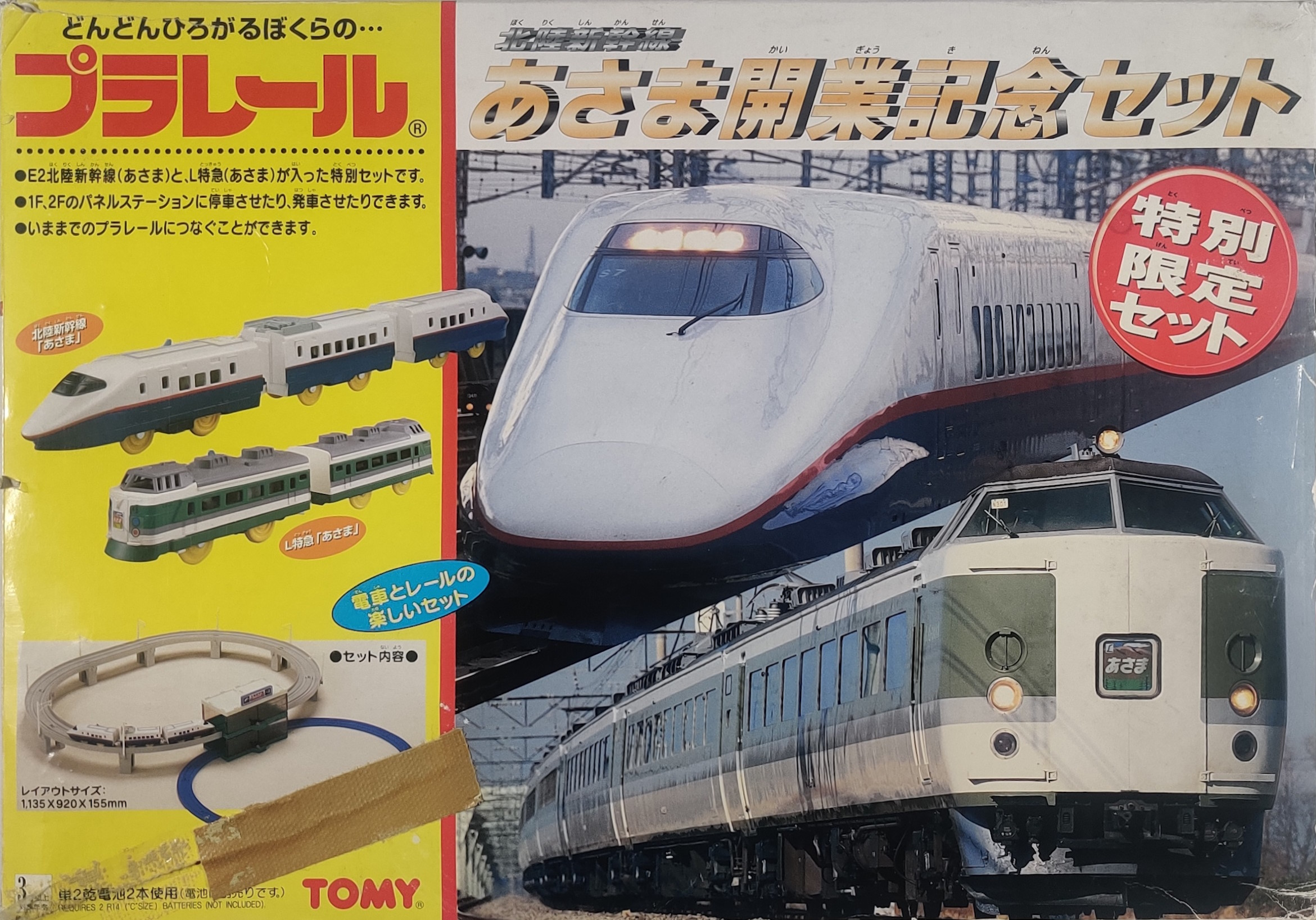
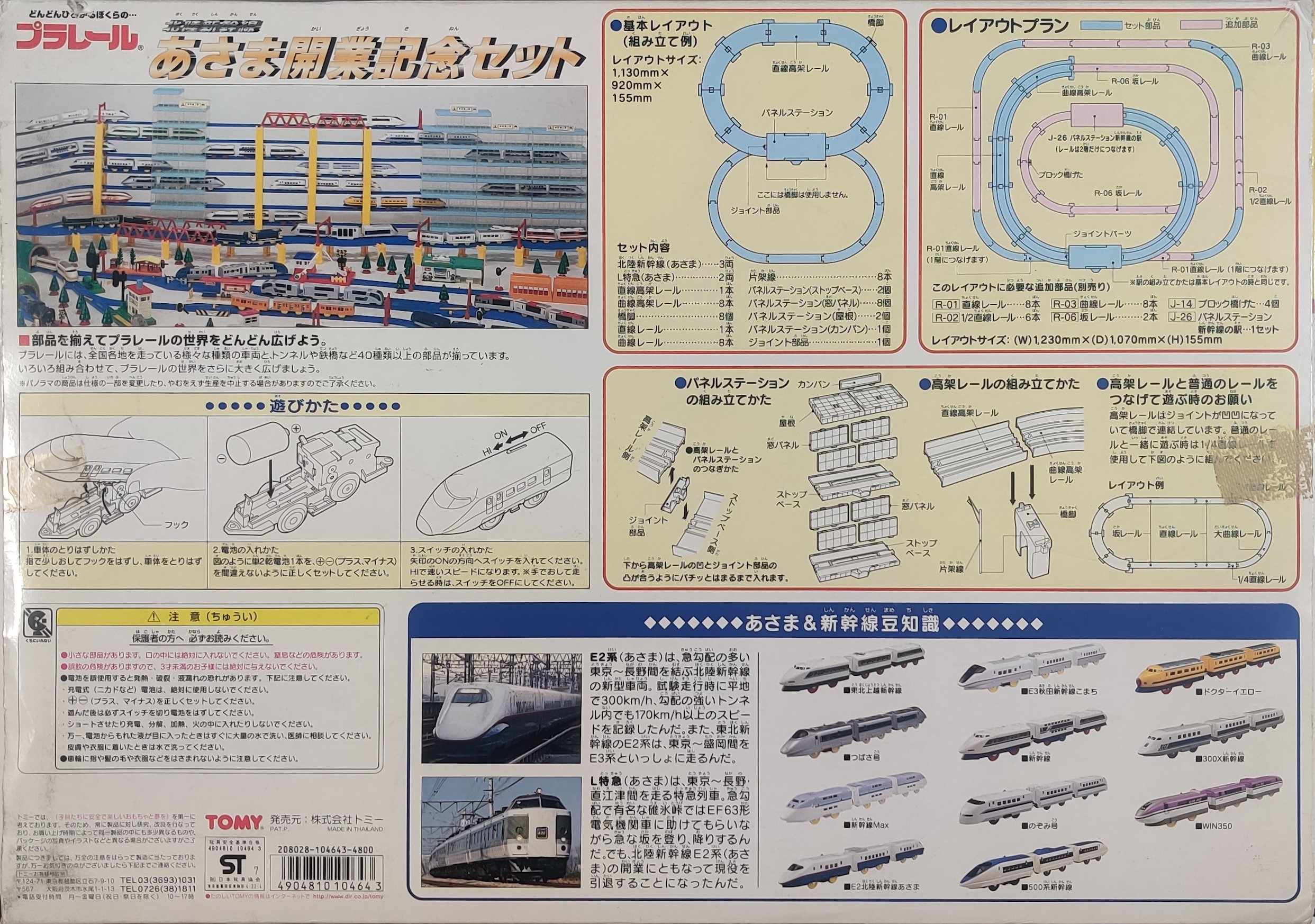
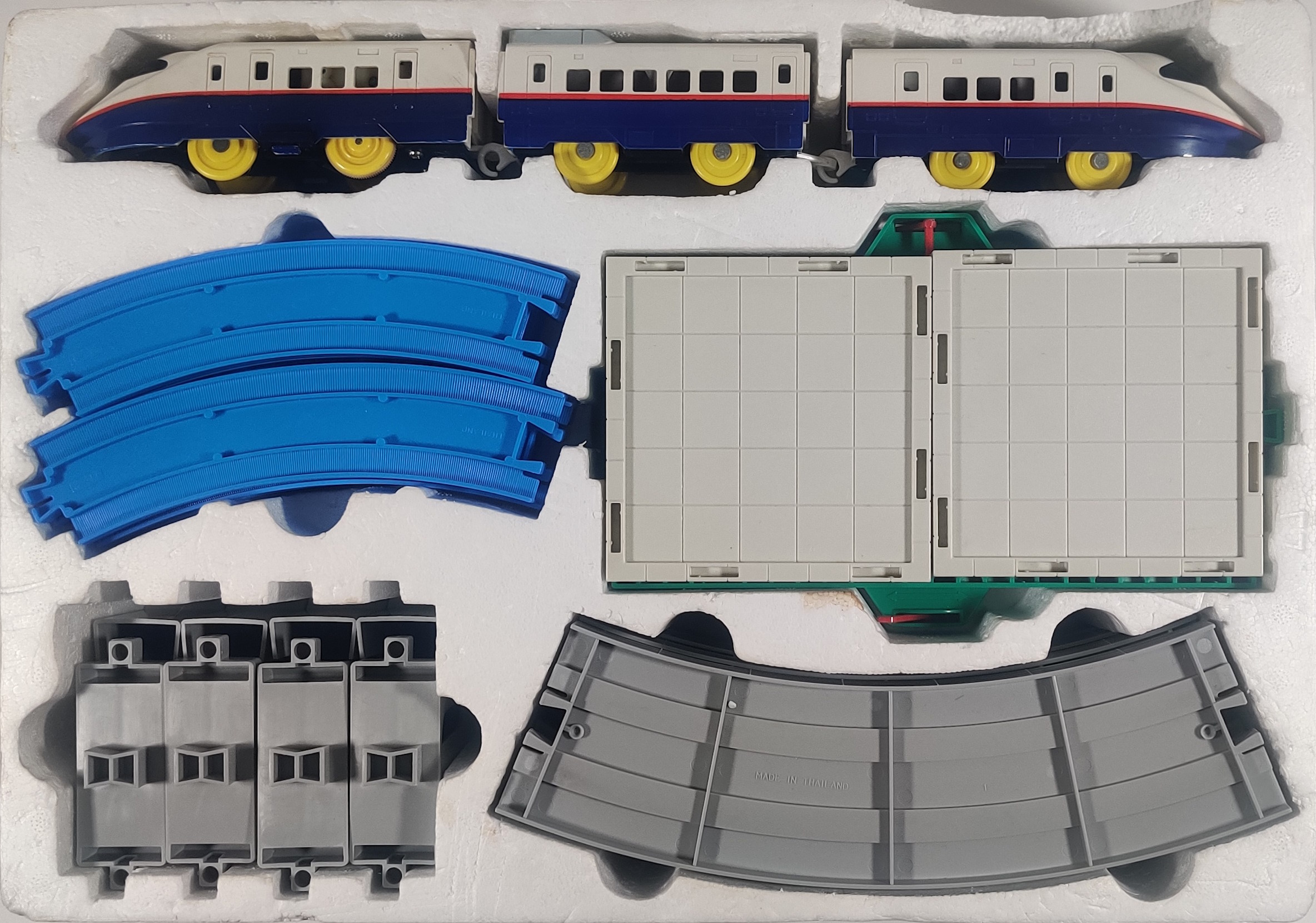
The Hokuriku Shinkansen Asama Opening Commemorative Set (北陸新幹線あさま開業記念セット) was released in 1997 to commemorate the opening of the Hokuriku Shinkansen line, originally running between Takasaki and Nagano. Trains on this route are referred to as the Asama service and were run by E2 series Shinkansens from 1997 until they were fully replaced by E7 and W7 trains in 2017. Prior to the Shinkansen line, the Asama was an L Limited Express train serviced by 189 series trains. Both the new E2 Shinkansen and old 189 series L Limited train are included in this set as well as a two-layer panel station with a "traditional" line for the 189 as well as an elevated Shinkansen line.



The red round popout around the box says that this is a "Special Limited Set." The E2 Shinkansen is a complete three-car train while the L Limited is only the power and tail cars. The back of the box says of the E2, approximately: "The E2 series (Asama) is a new model of the Hokuriku Shinkansen line that connects Tokyo and Nagano which has many steep slopes. During test runs, speeds were recorded of 300km/h on flat ground and over 170km/h even in tunnels and on steep slopes. Additionally, the E2 series on the on the Tohoku Shinkansen Kei Tokyo Morioka Line runs together with the E3 series between Tokyo and Morioka." Of the L Limited it says: "The Tokyo Nagano L Limited Express (Asama) is a limited express train that runs between Tokyo and Nagano. At the Usui Pass, which is famous for its steep slopes, the EF63 electric locomotive helps it climb up and down the steep slope. Its a good idea. However, with the opening of the Hokuriku Shinkansen E2 series, it has been retired from active service." The back of the box also shows what looks like a pretty cool option for expanding the set with additional track and accessories. This set is similar in set and contents to the 500 series commemorative set released previously, with an elevated Shinkansen line meeting an L Limited train at a two level panel station. This set can be seen in the Plarail Museum.
Set contents| Quantity |
Item |
Photo |
|---|---|---|
| 3 pieces | Asama E2 Hokuriku Shinkansen |
 |
| 2 pieces | Asama L Limited Express |
 |
| 1 | R-01 Straight Rail |
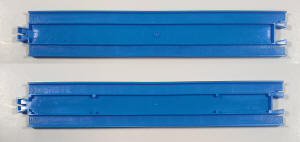 |
| 8 | R-03 Curve Rail |
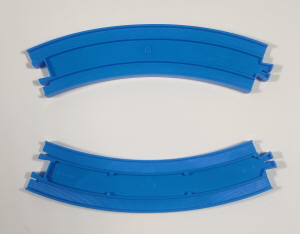 |
| 1 | Elevated Straight Rail |
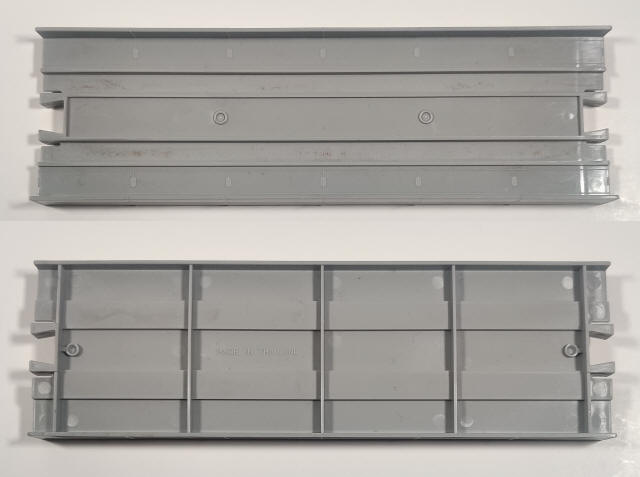 |
| 8 | Elevated Curve Rail |
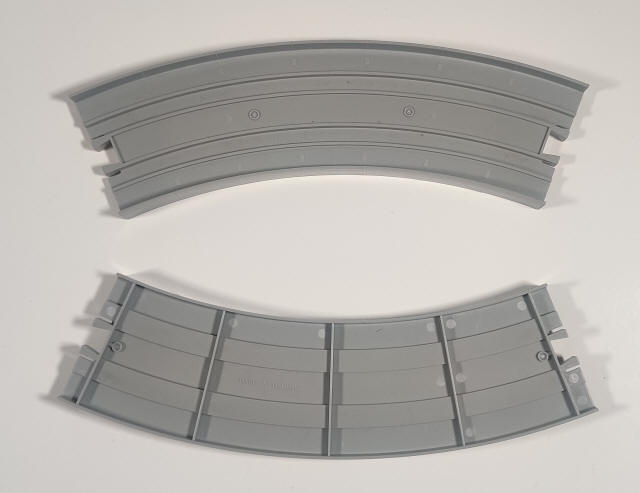 |
| 1 | Connecting Clip |
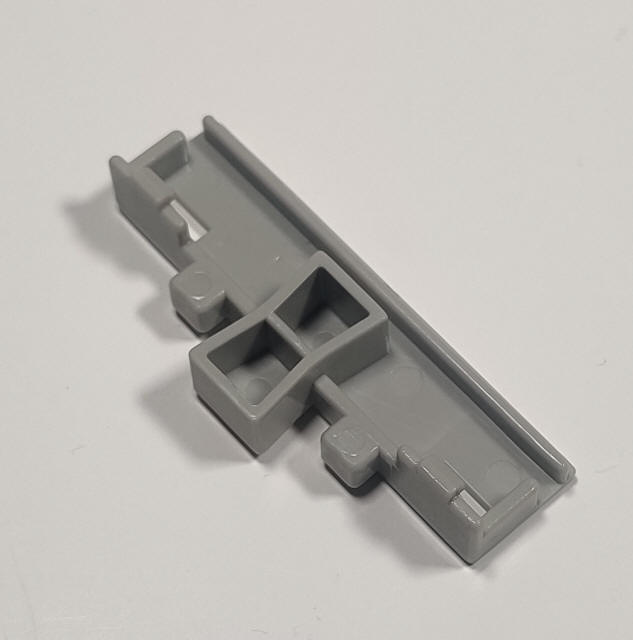 |
| 8 | Bridge Girders |
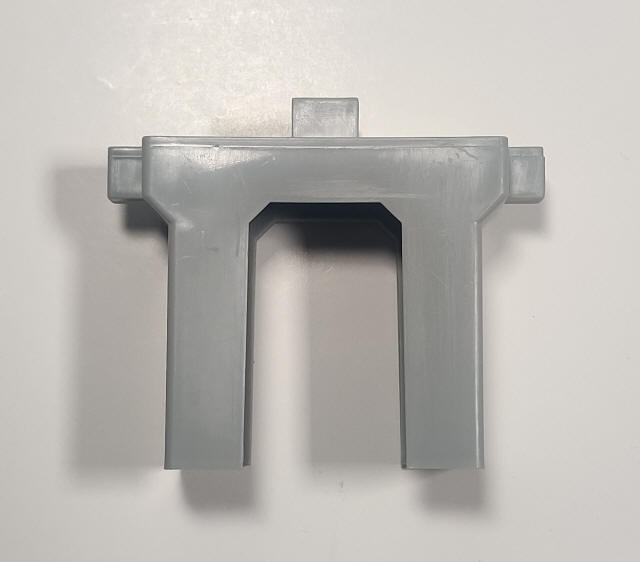 |
| 8 | Single Overhead Wire |
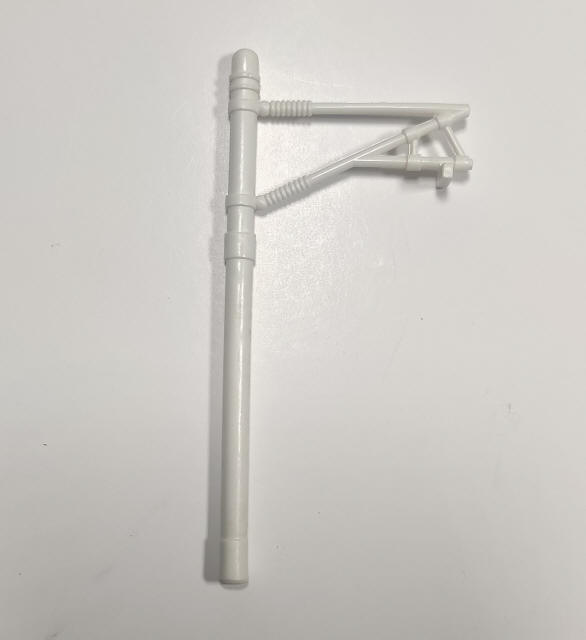 |
| 13 pieces | Panel Station |
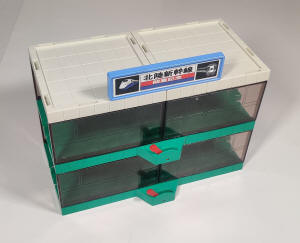 |
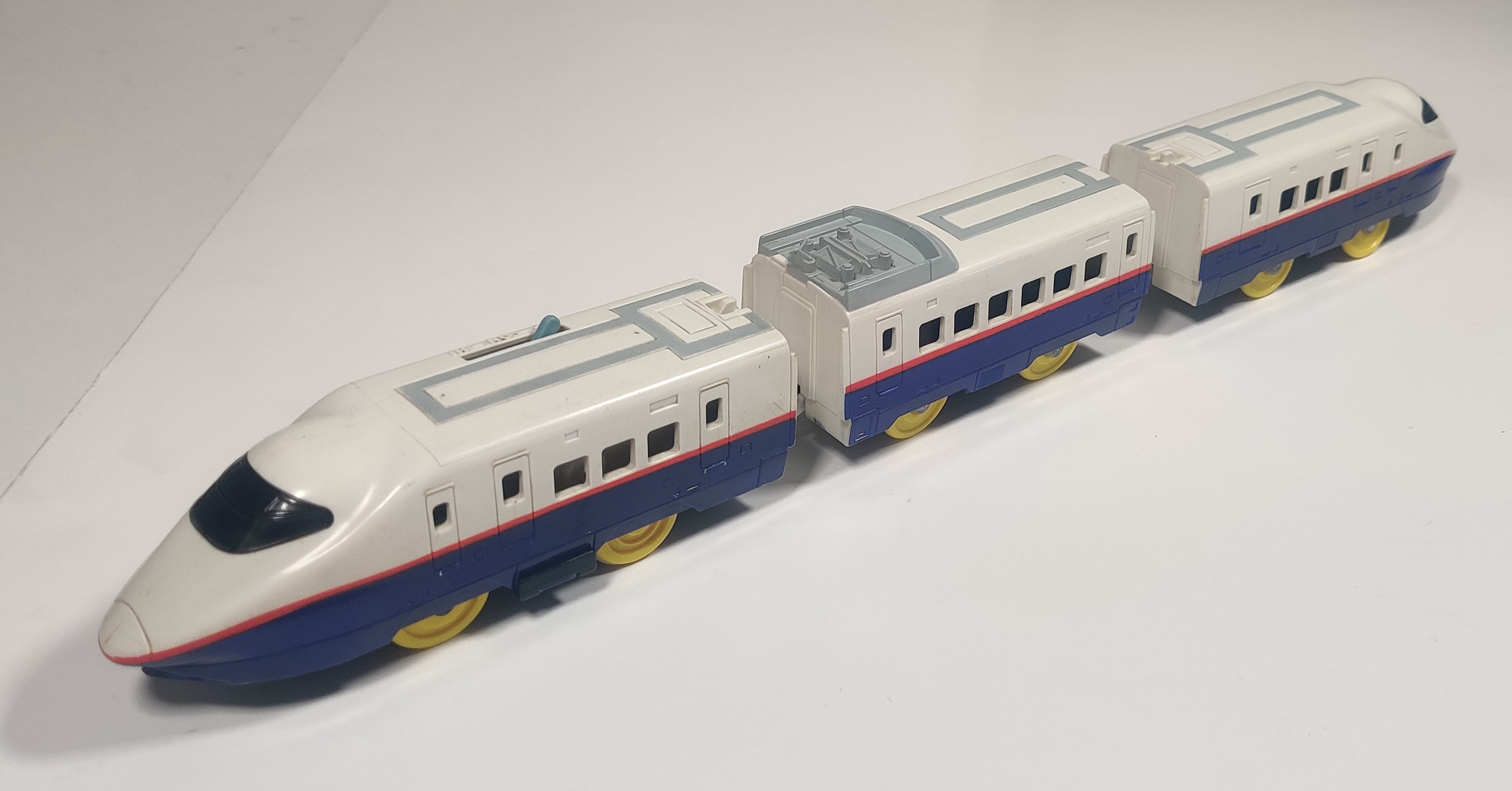
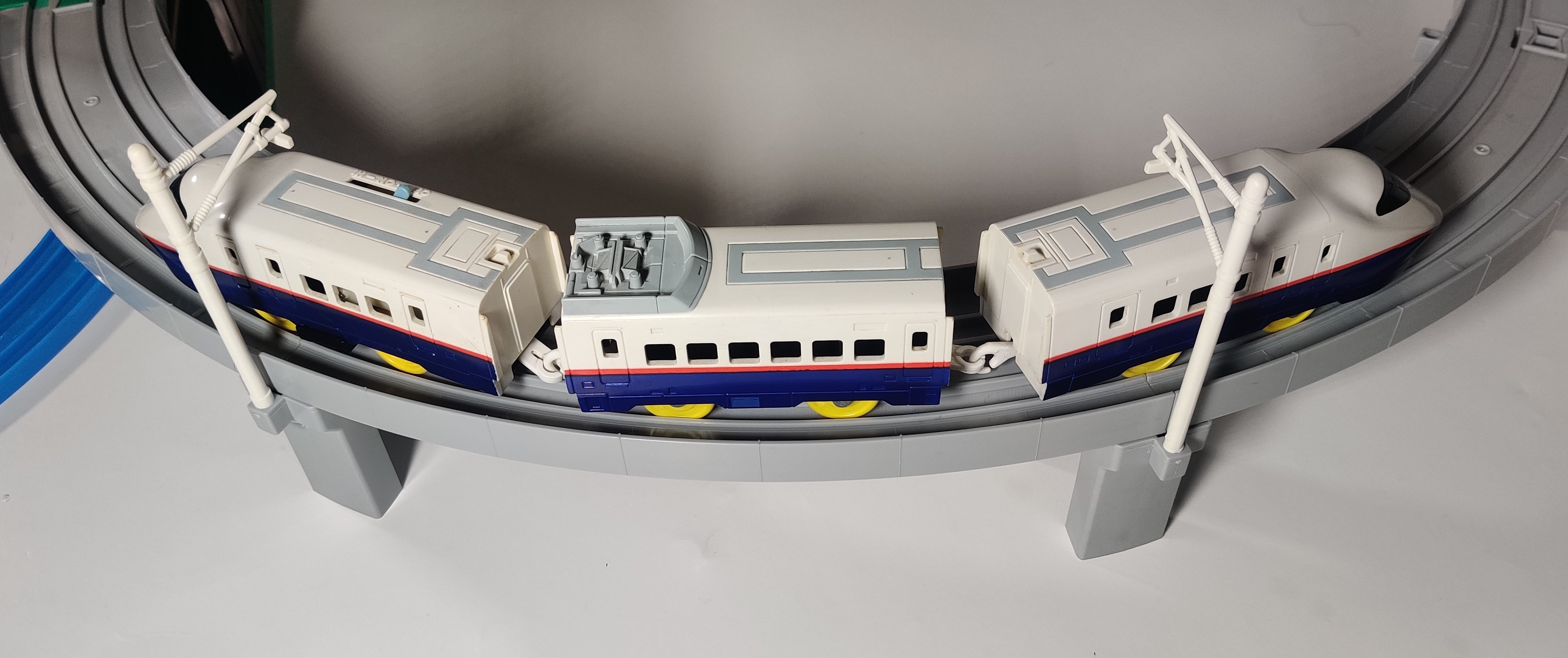
The E2 Shinkansen entered service in 1997 first on the Akita and later on the Asama service represented here. The E2 was first released by Tomy in 1996 as the E2 Hokuriku Shinkansen. The E2 is not my favorite design of Shinkansen.
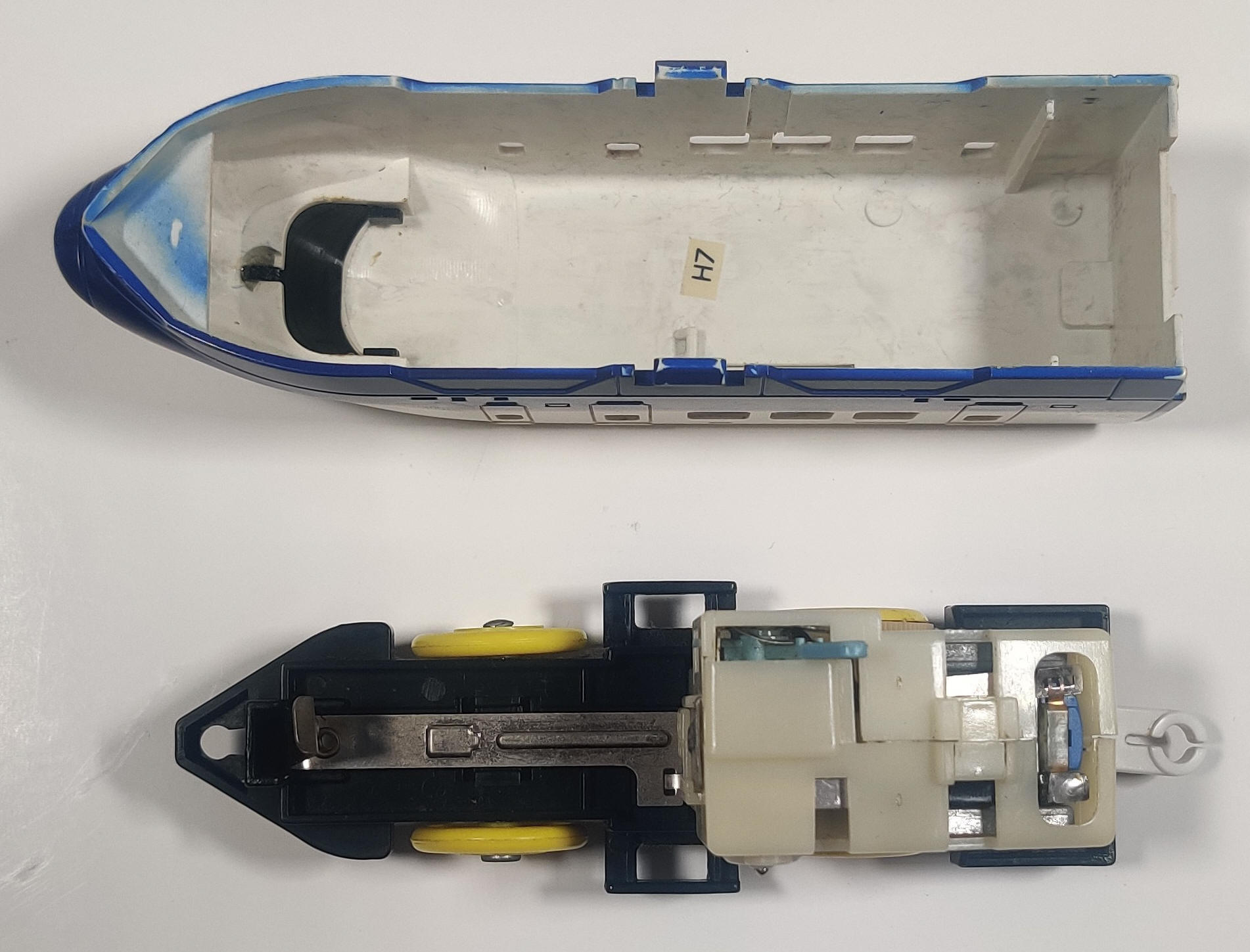
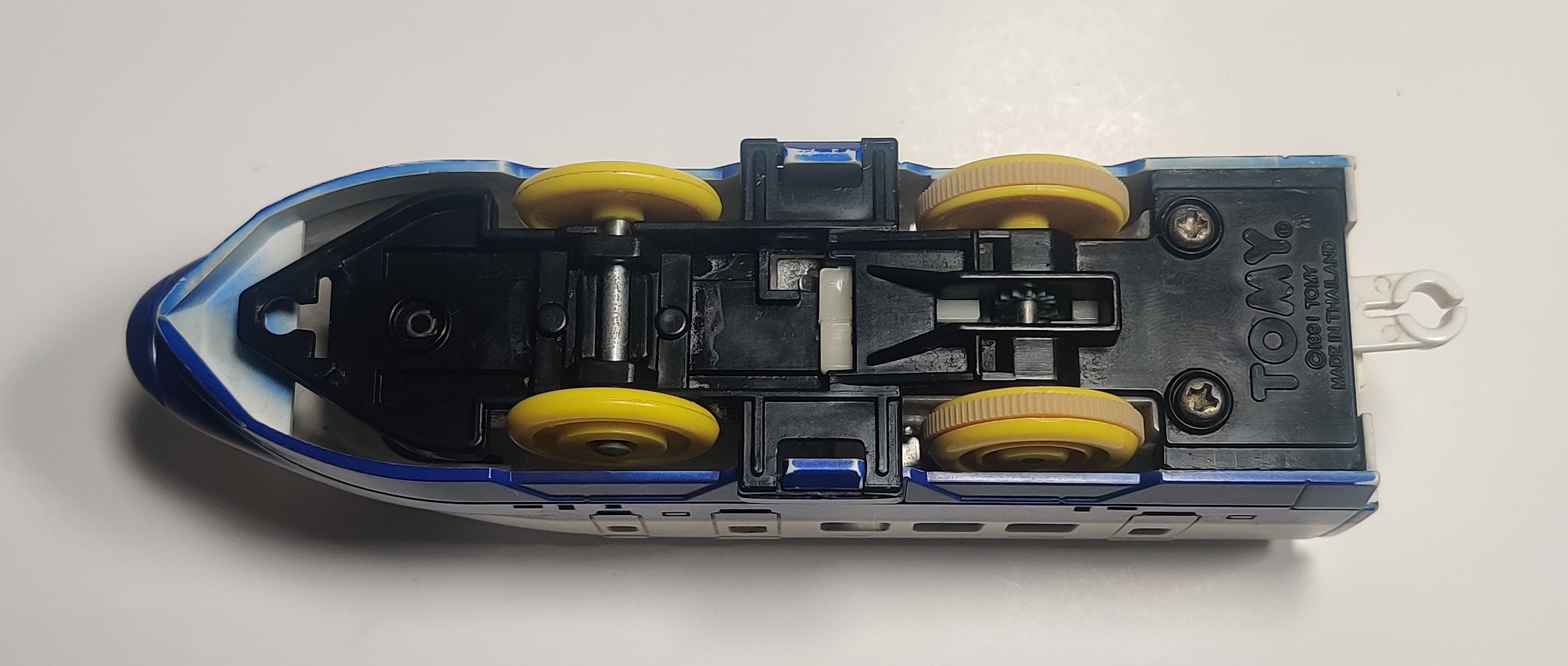
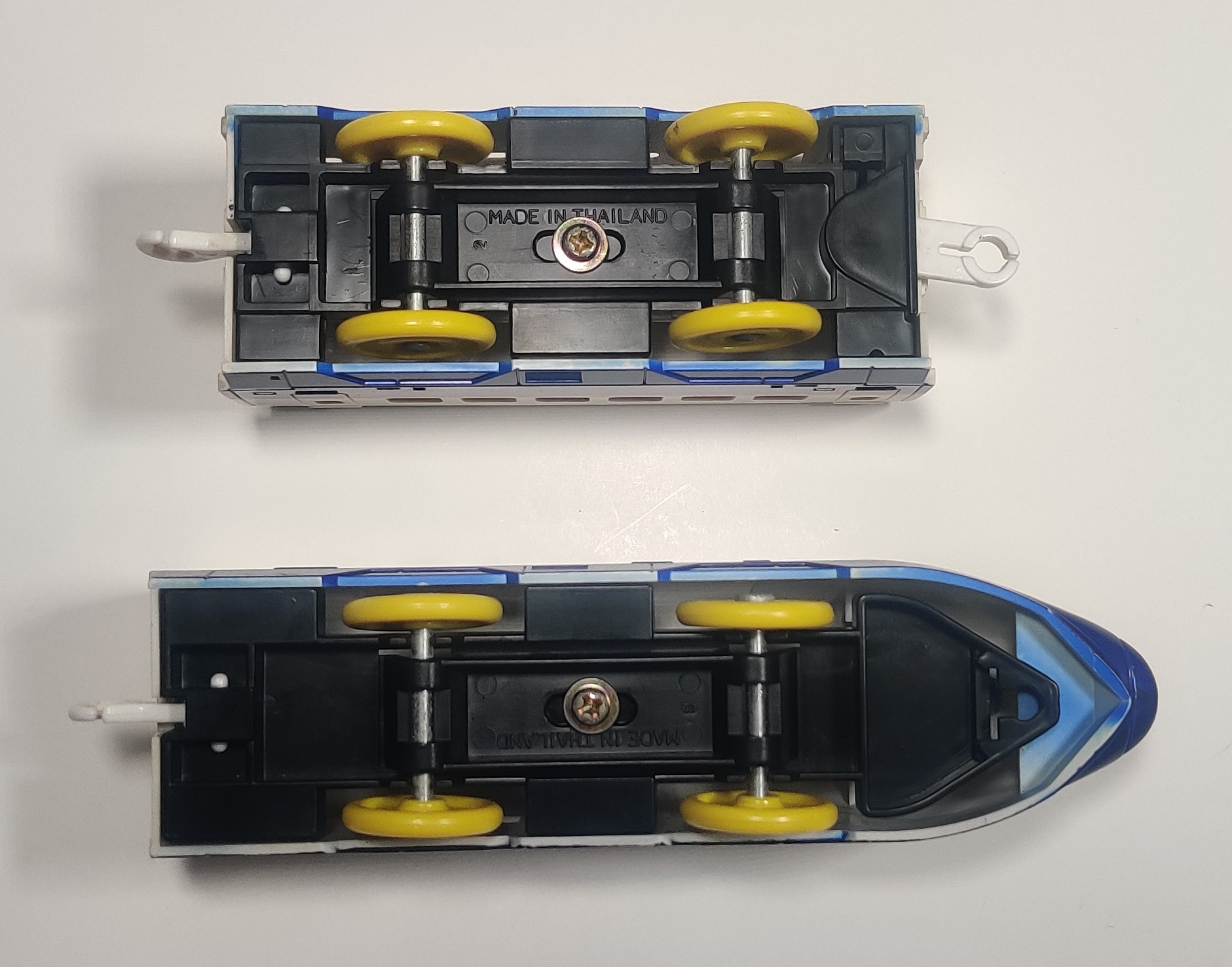
The E2 Shinkansen uses a two-speed new power gearbox with the light blue gears and power switch used in the mid-late 90s. These gears are somewhat failure prone and in fact both the gearboxes in my set needed repairs. The specifications and layout of gears in these gearboxes are covered on the new power gearbox page. Construction is typical for the period with larger collared screws holding the intermediate and tail cars together with somewhat messy paint application on the inside of the train.
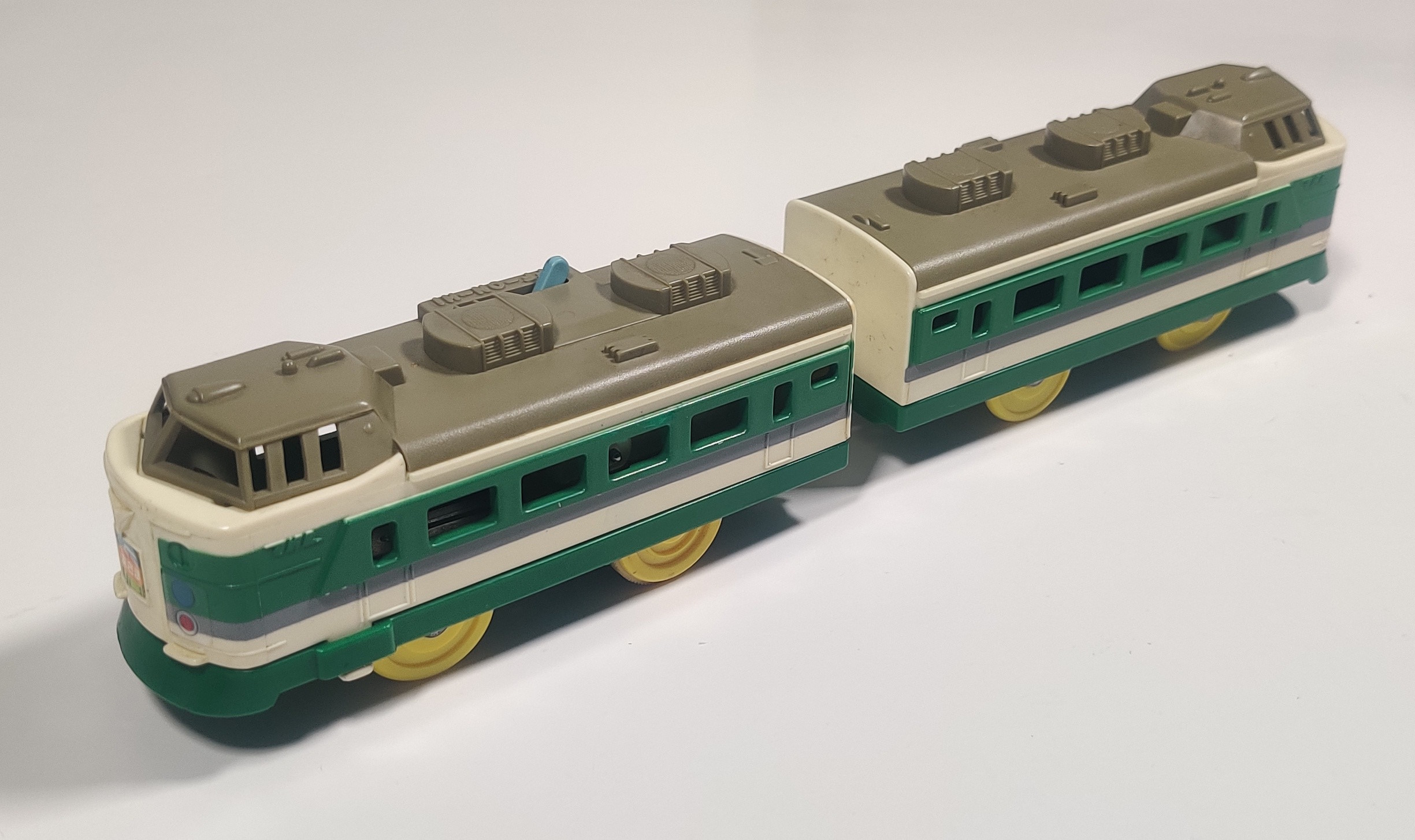
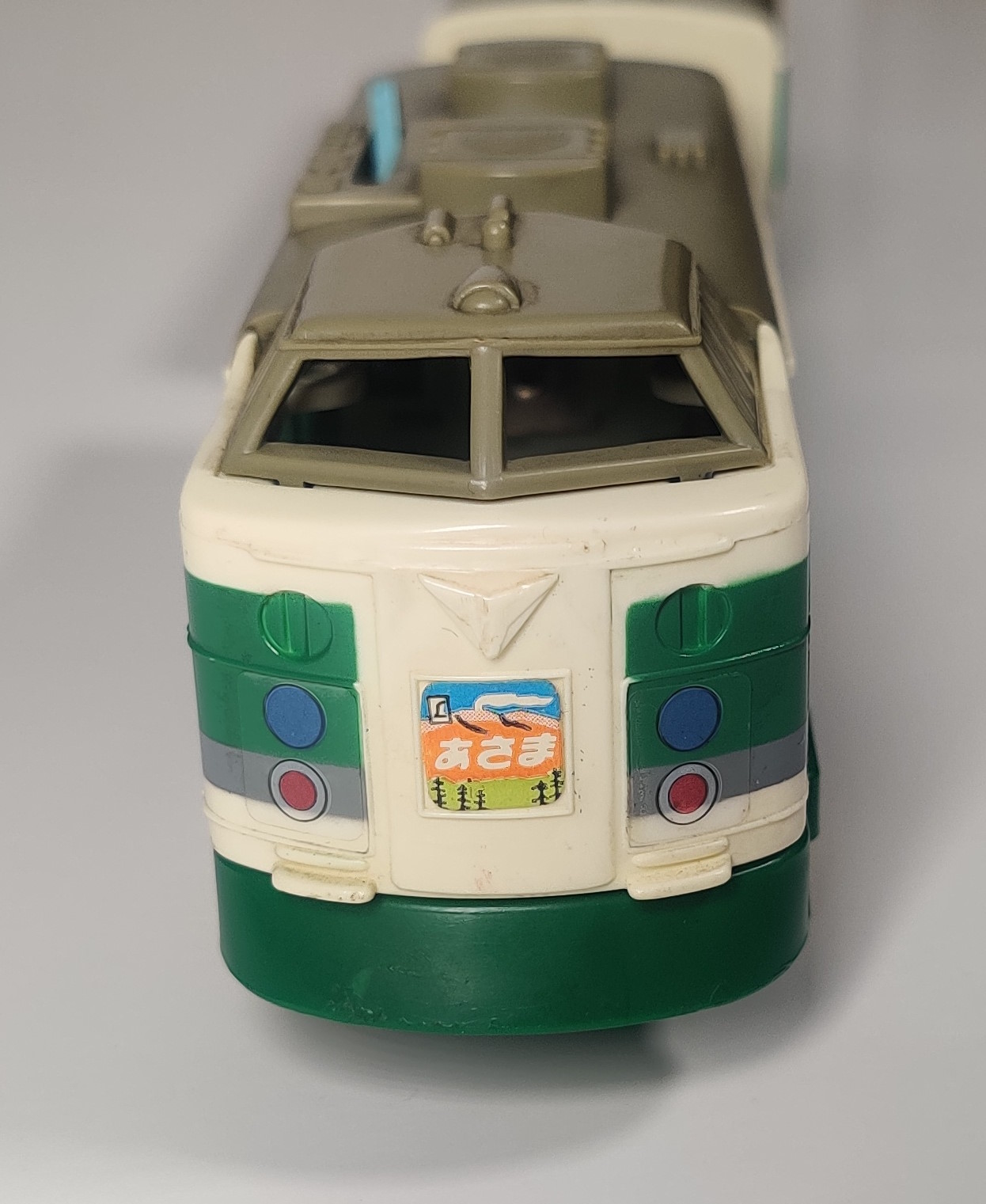
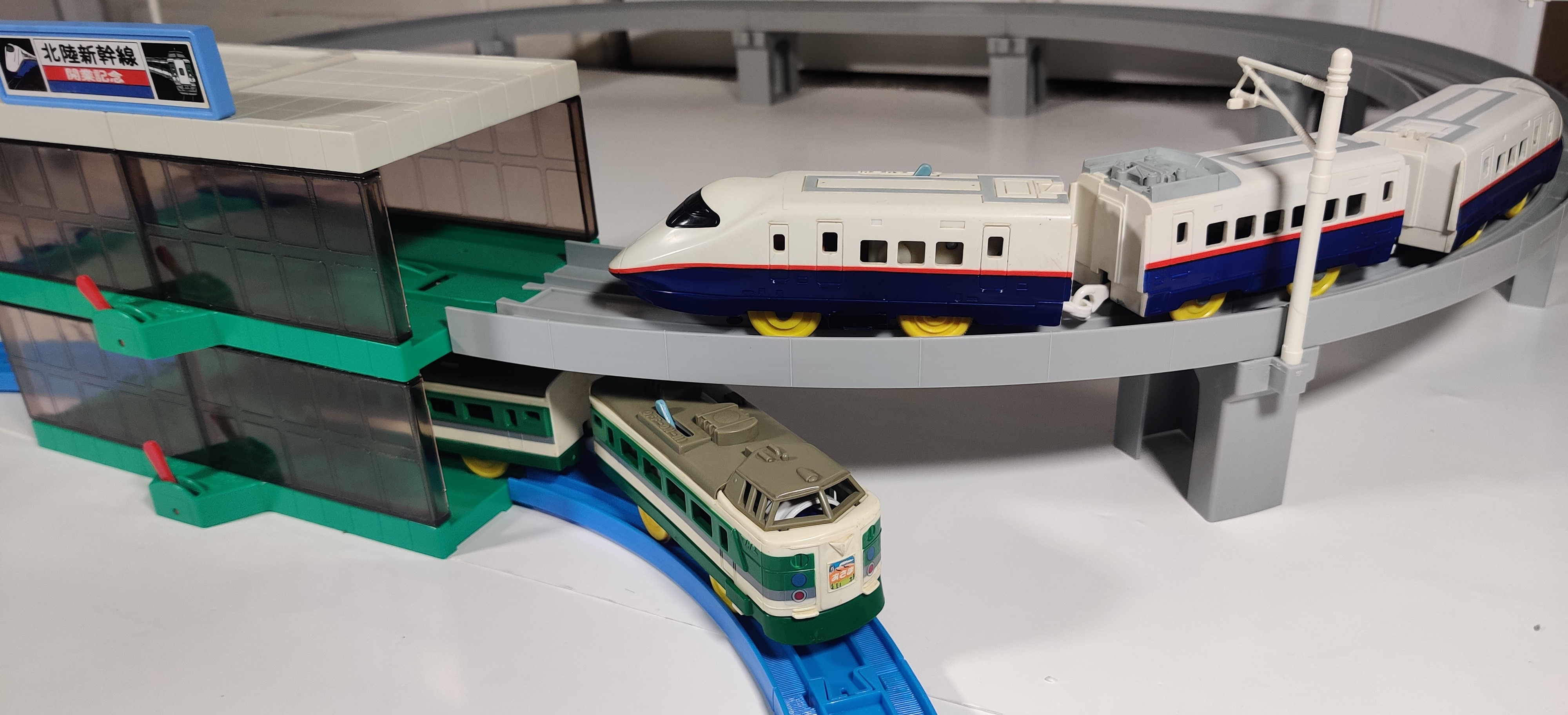
The 189 series is a nice and accurate recolor of the regular L Limited Express of the era. It also has a two-speed new power gearbox and bears the Asama headmark. I do sort of wish the 189 series had the intermediate car, especially because the E2 Shinkansen was a regular release and would be easier to find with an intermediate car, but the set is really about the new E2 Shinkansen so I get why they omitted the intermediate car. A pack with an EF63 and unpowered Asama 189 with an intermediate car was released in 2004 to replicate how the EF63 would assist the Asama up the slopes of the line, but this pack is harder to find than an E2 Shinkansen.
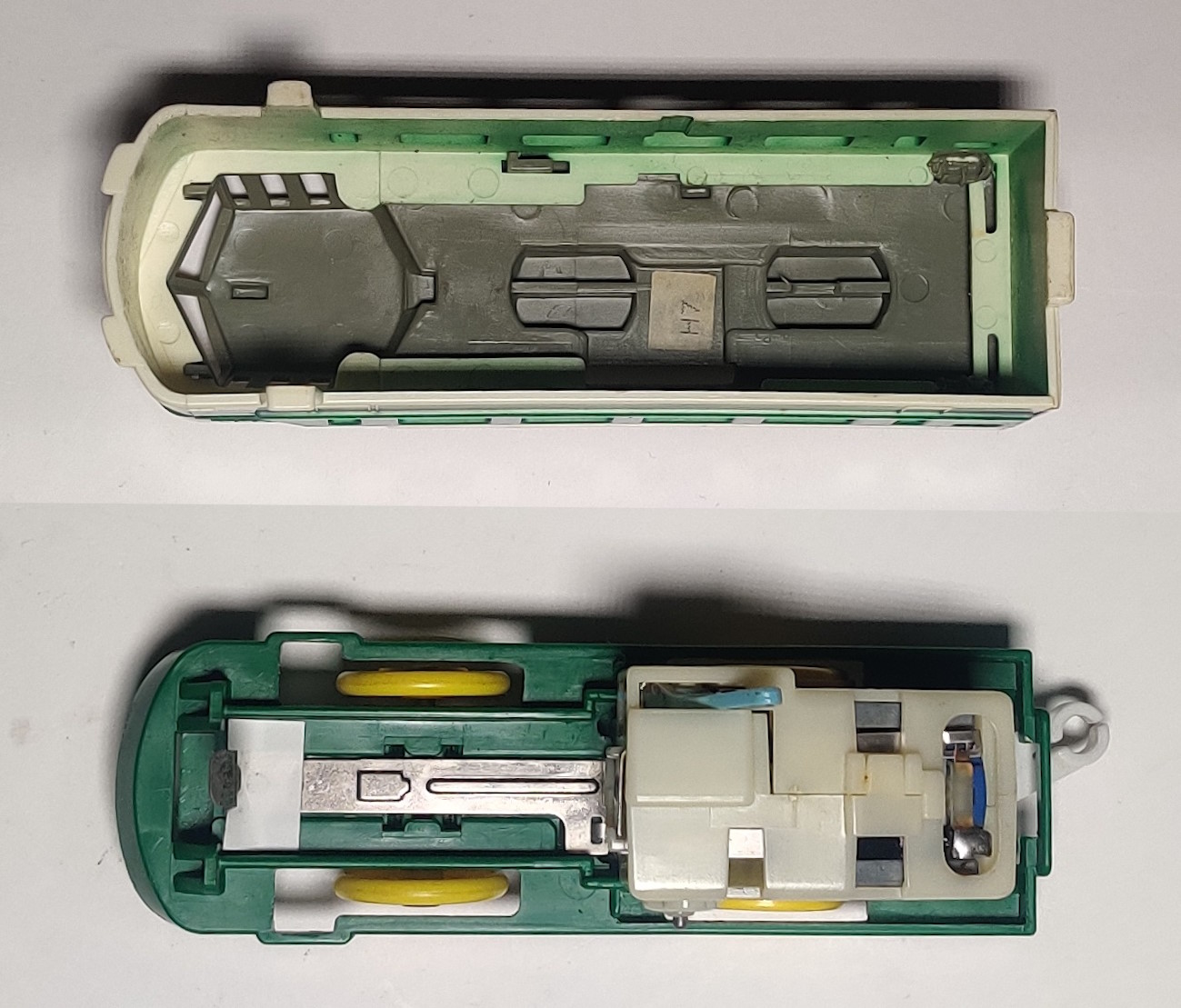
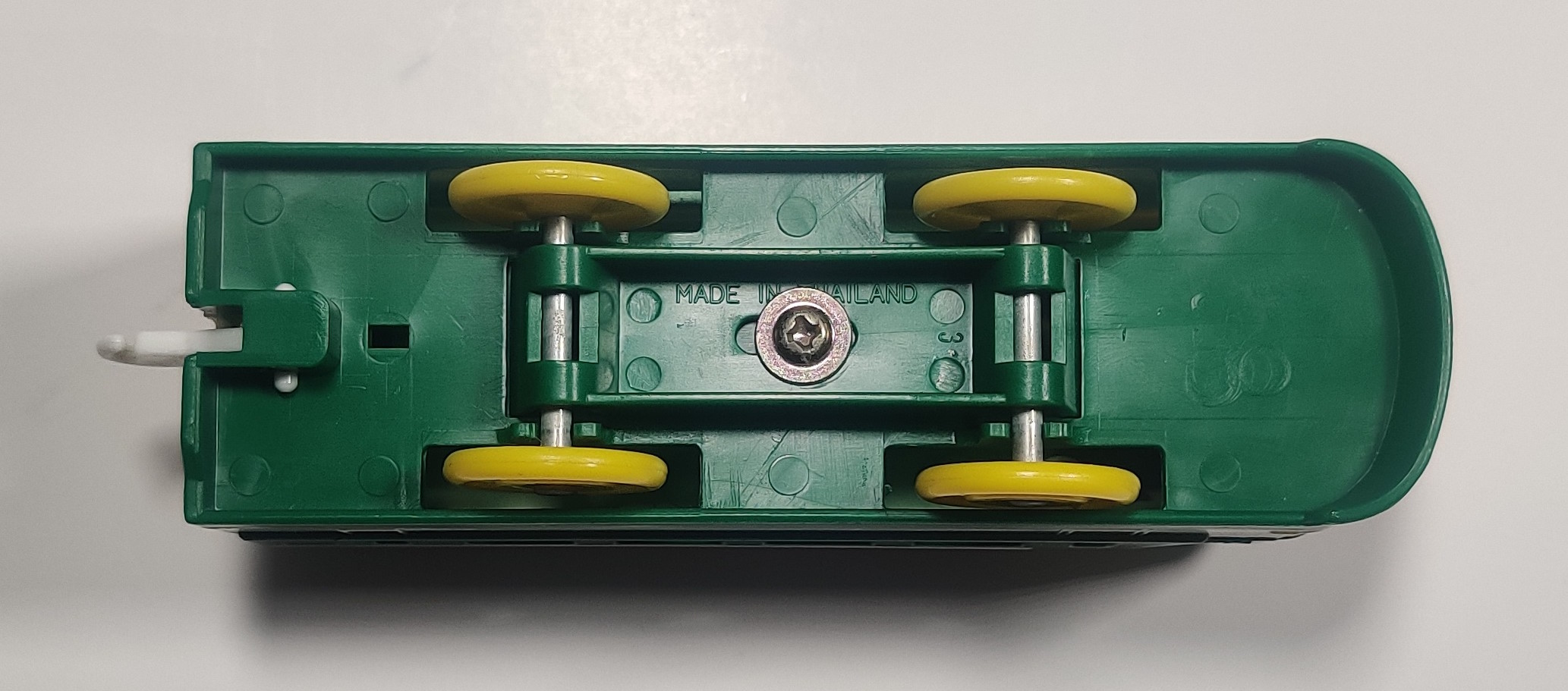
The gearboxes in these trains are still old enough to not have the extra plastic tabs and have the right motor tab left unsoldered, which is convenient for replacing split gears.
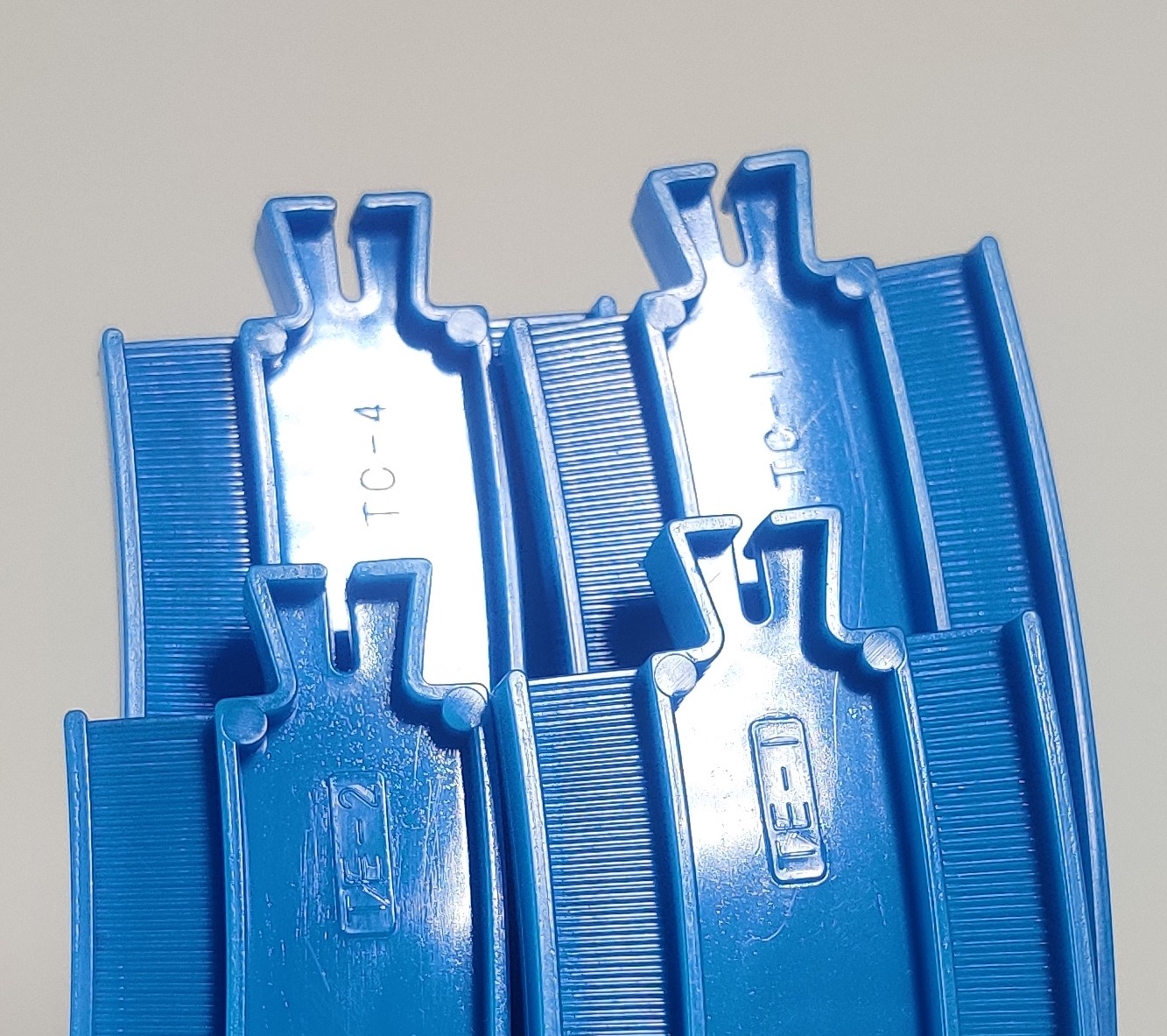
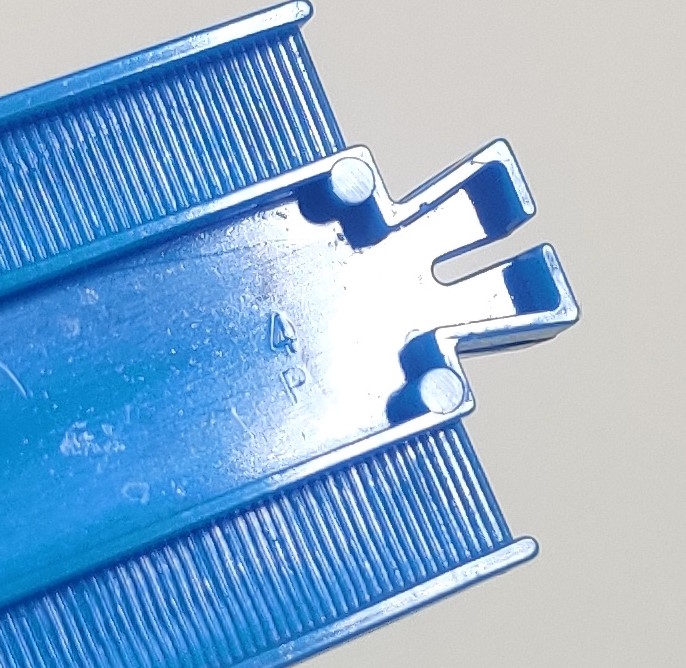
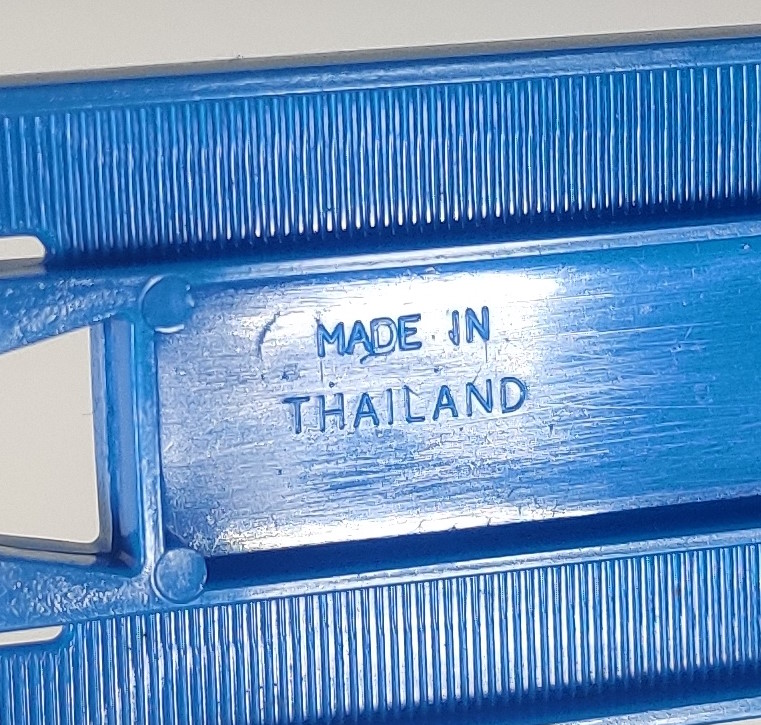
The traditional track in this set is fairly standard later 1990s fare. The curves in my set are a mix of TC and TE marked rails but I believe both of these toolings may have been used during this period. The straight rail is marked with a slot number but also a fainter letter (in this case a 4 and a P). These toolings all appear to be treaded originals with no roughtop remnants.
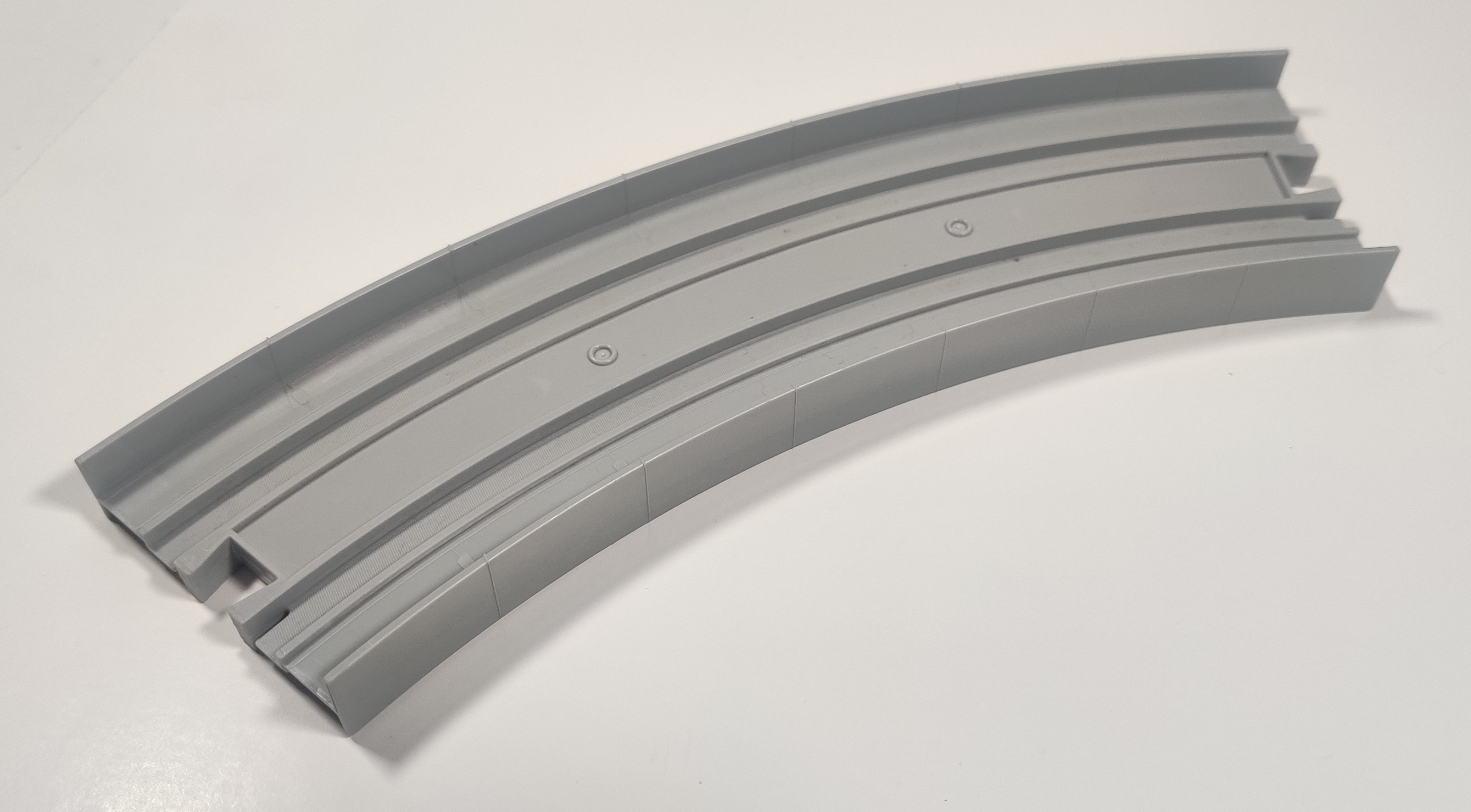
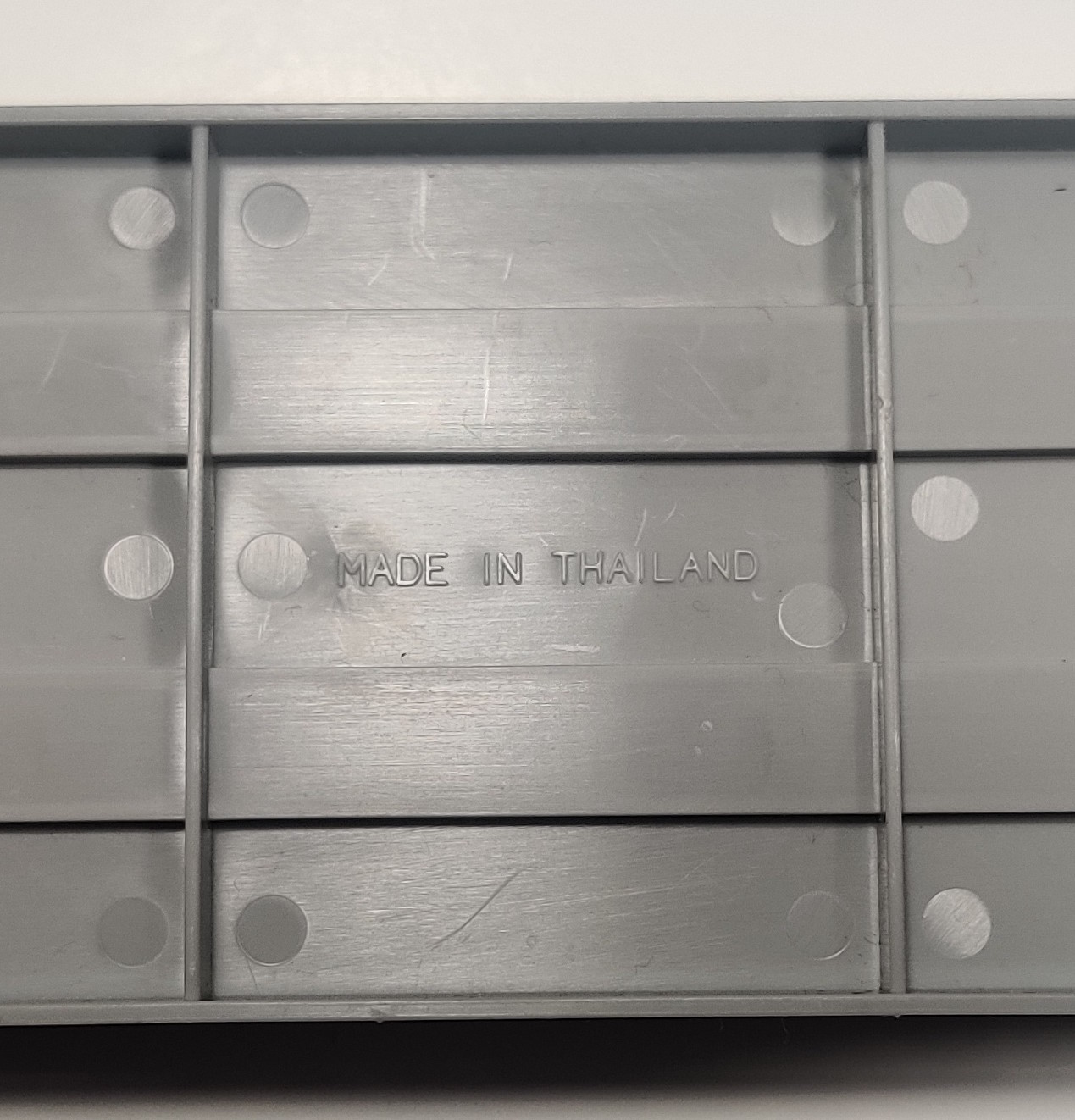
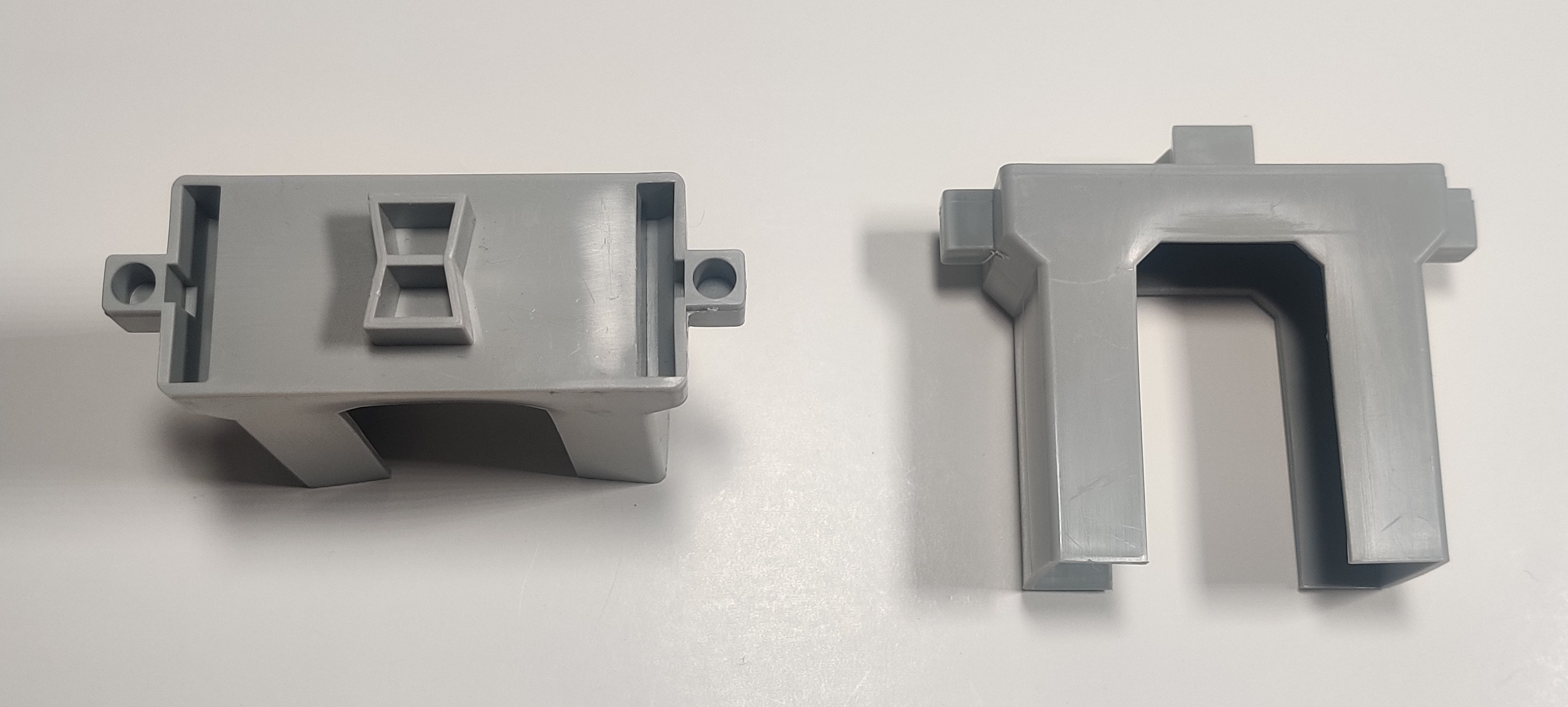
The elevated rails in this set are the same radius as the Large Curve Rail and were first used in a Shinkansen anniversary set in 1983. These rails have integrated side barriers and are concave on both sides, with the pier supports having integrated "beans" to keep the rails in place and connected. This makes the supports pretty secure. The piers also have slots for inserting the single overhead wires included with the set. The side barriers have molded separation lines that mimic the individual sections the real things would be made of.
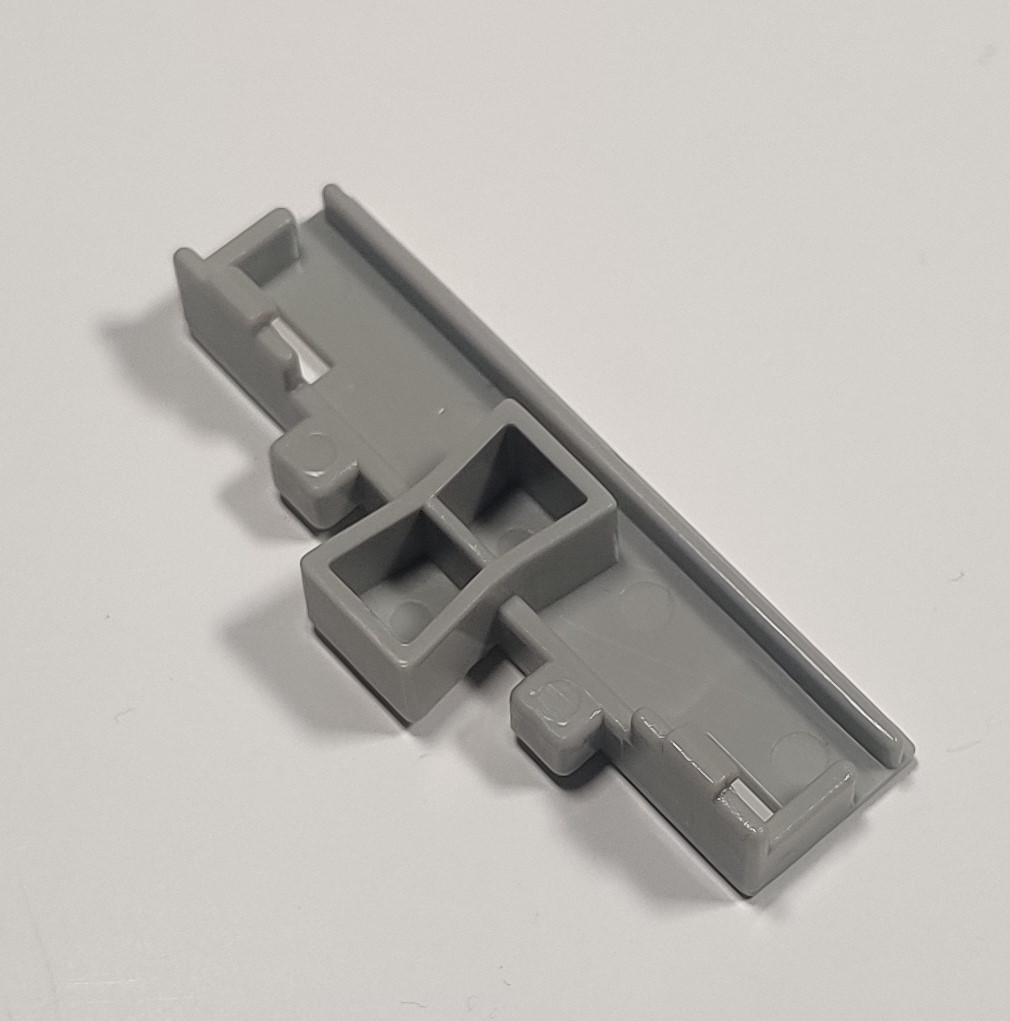
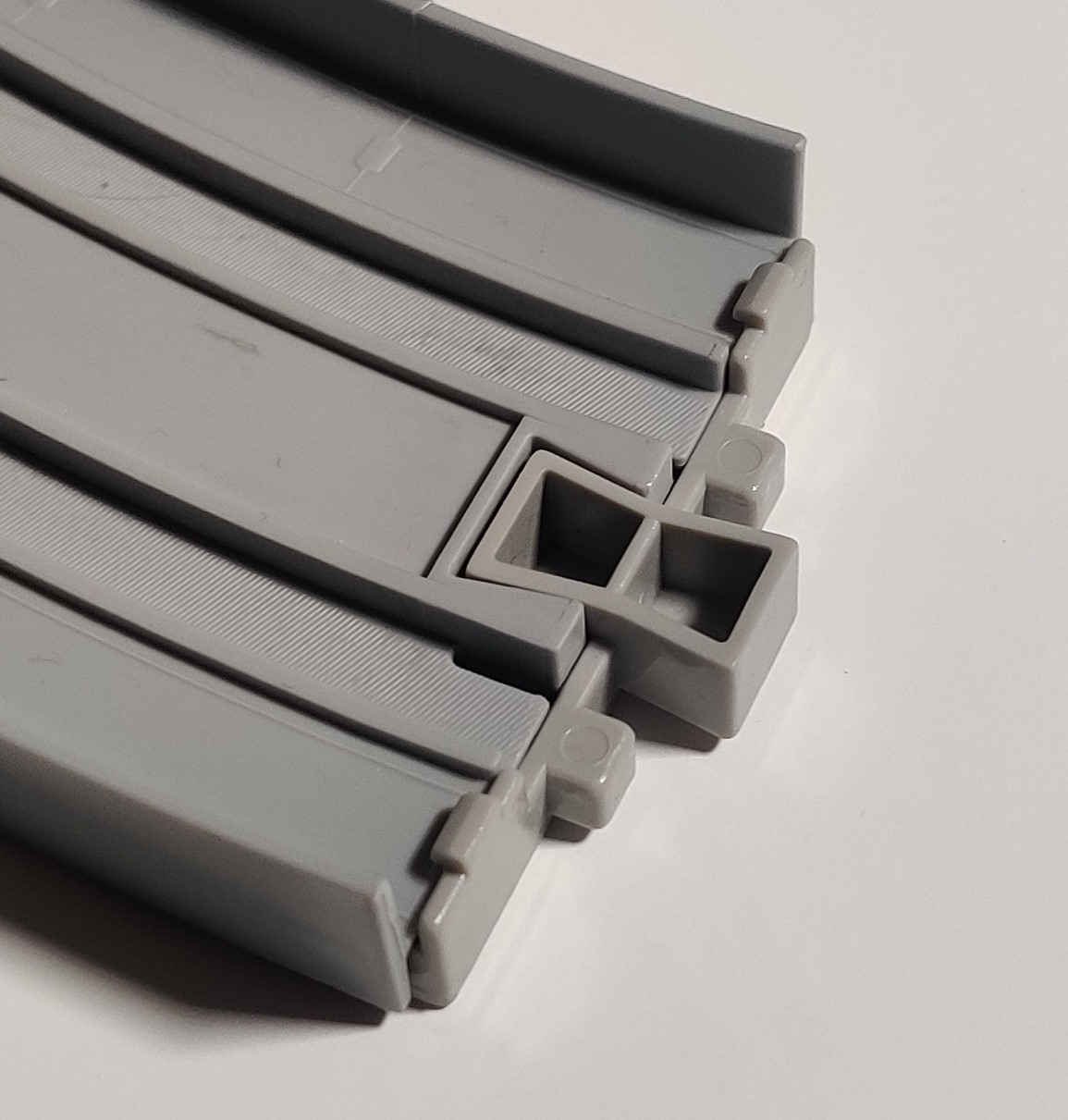
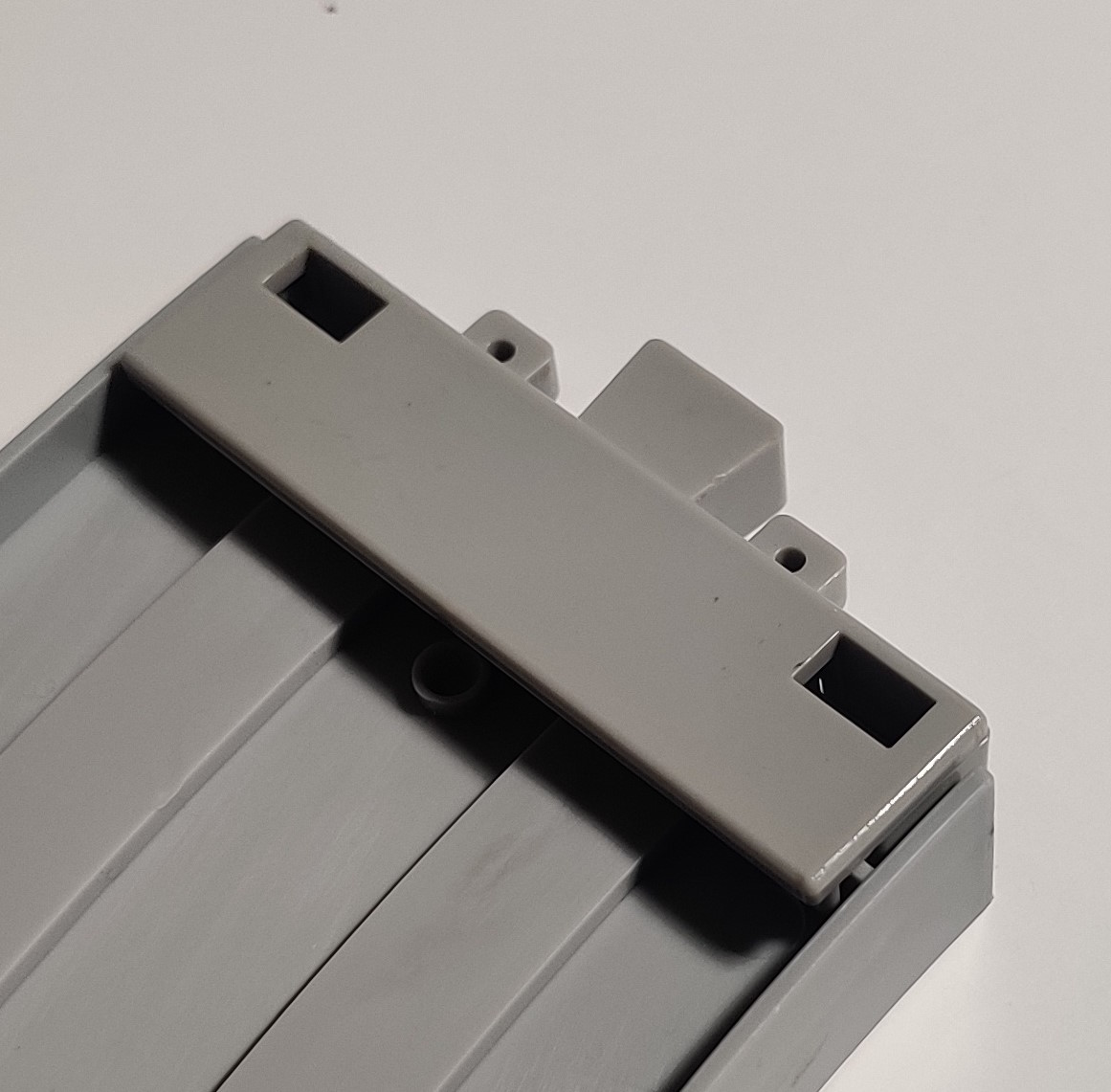
To connect the concave end of the loop to the panel station a small clip is used which secures to the bottom of an elevated rail and sits in the track supports on the panel station platform.
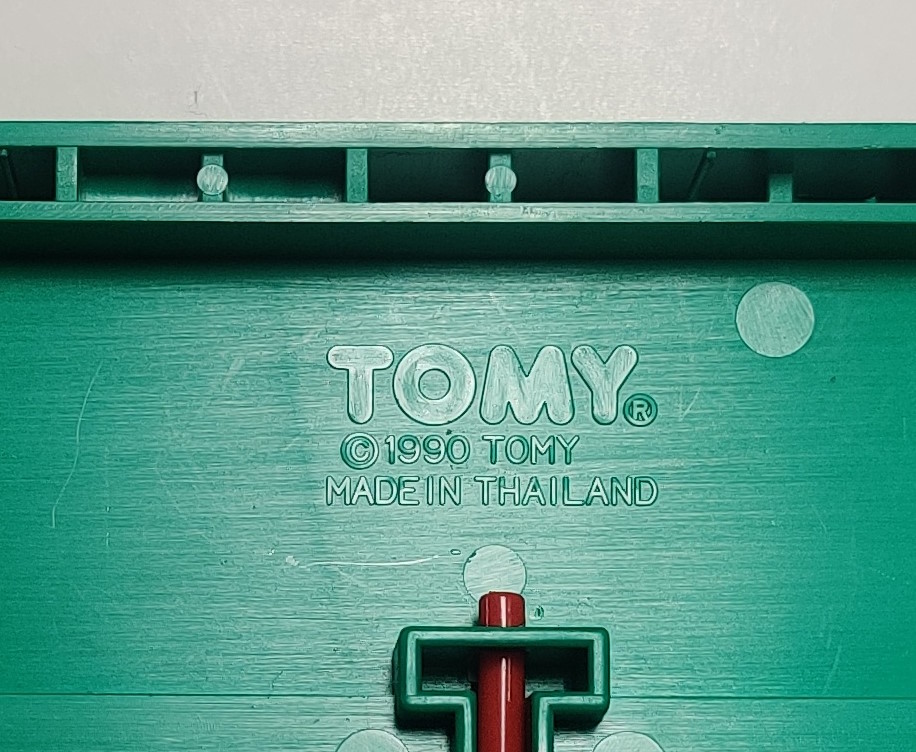
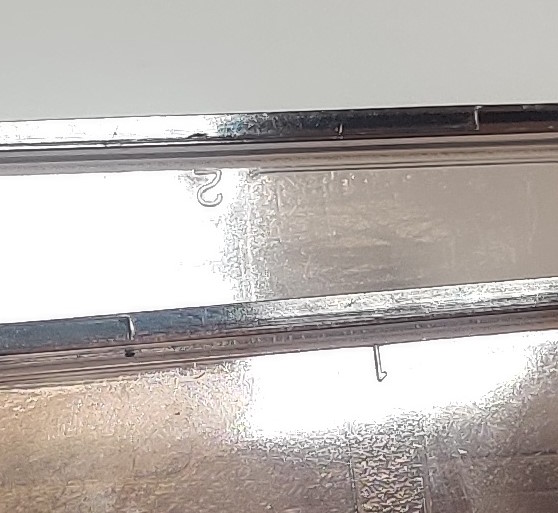
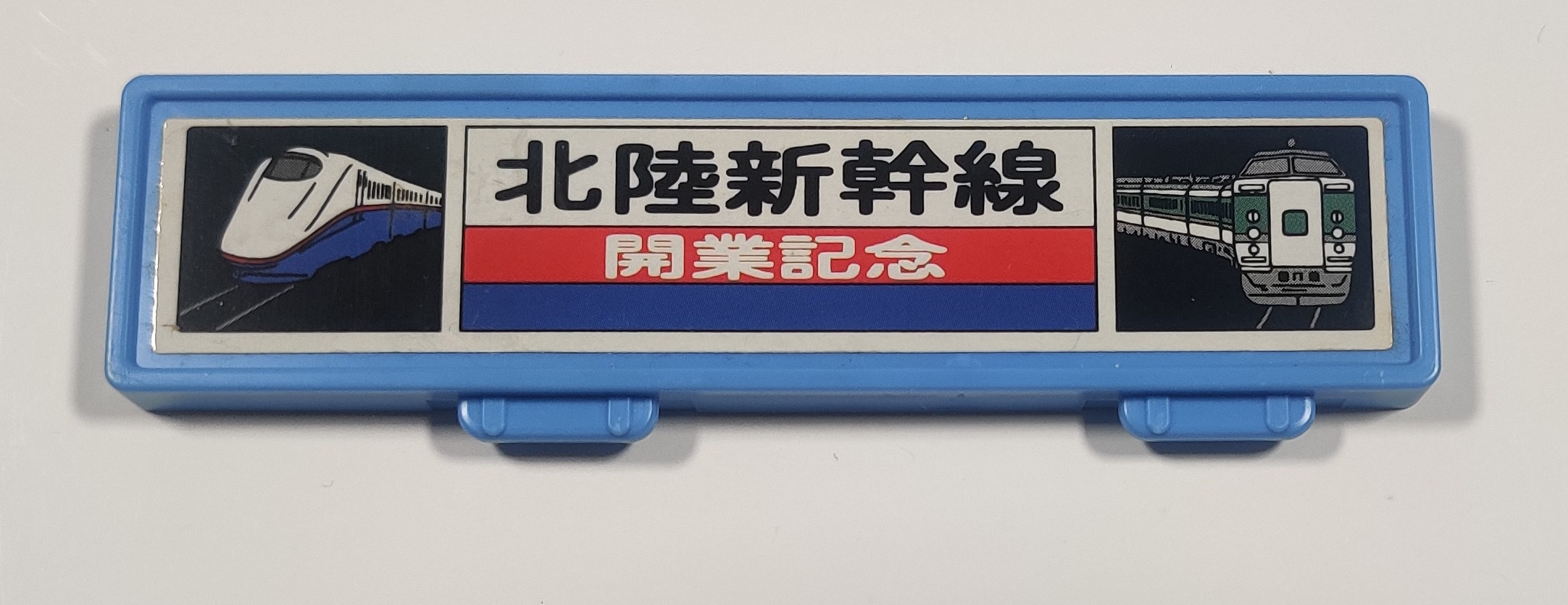
The panel station is made up of two of the "stopper" bases first produced in Thailand circa 1990, eight window panes, two square roof sections, and a "Hokuriku Shinkansen Opening Commemoration" sign.
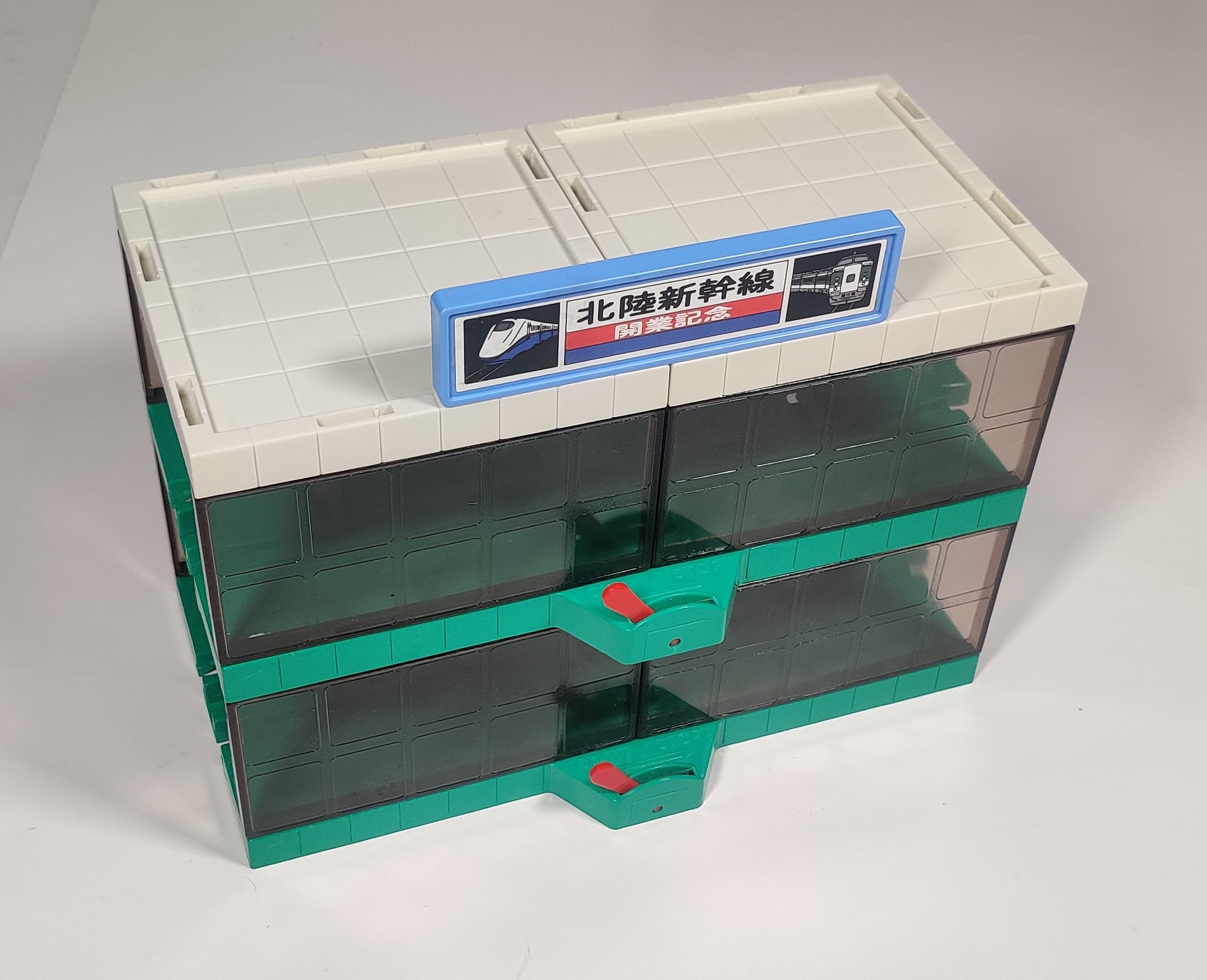
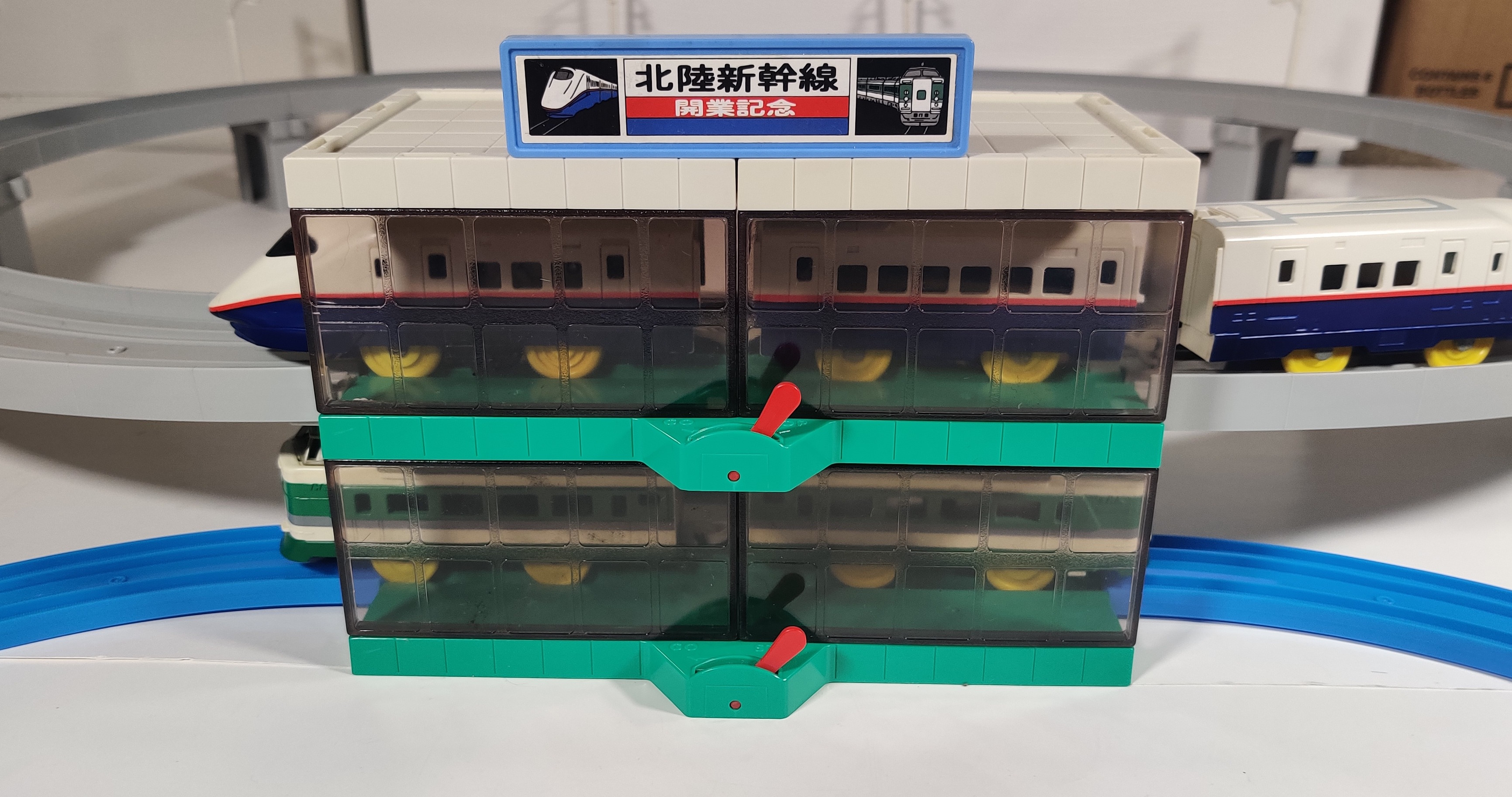
Although the two Asama trains depicted did not operate in this manor, the two-level station lends itself well to the idea that the station is an interchange between the Shinkansen line and traditional route where local passengers can take their local train to the Shinkansen line to reach further places or disembark the Shinkansen to travel to a local destination.


Both trains having two-speed gearboxes is nice because it lets you run the L Limited at a slower speed. The large radius curves look very nice with the overhead electrical lines and the Shinkansen.

The two stopper plates in the panel station allow you to stop both trains to facilitate train transfers and let the two trains depart at the same time. Running trains in the same or opposite directions is fun and it is easy to incorporate the raised Shinkansen line into a larger setup by expanding the lower traditional line.
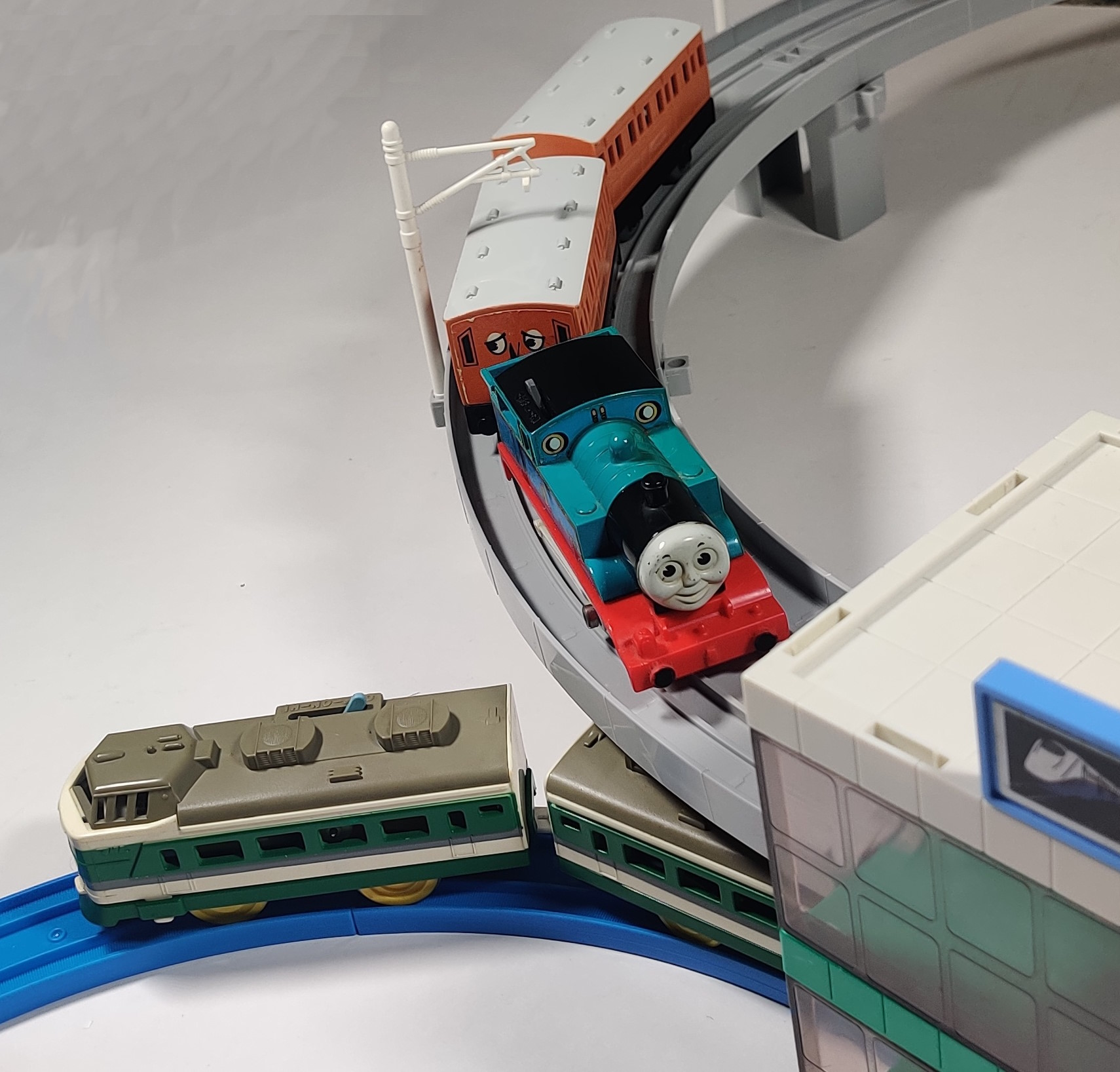
Ah, a different E2...
| Set name | Hokuriku Shinkansen Asama Opening
Commemorative Set 北陸新幹線あさま開業記念セット |
Release period | Late 1997 |
| Train rating |
    
| Track rating |
     |
| Accessory rating |
     | Overall |
     |
| Notes: | Price | 4800 yen |